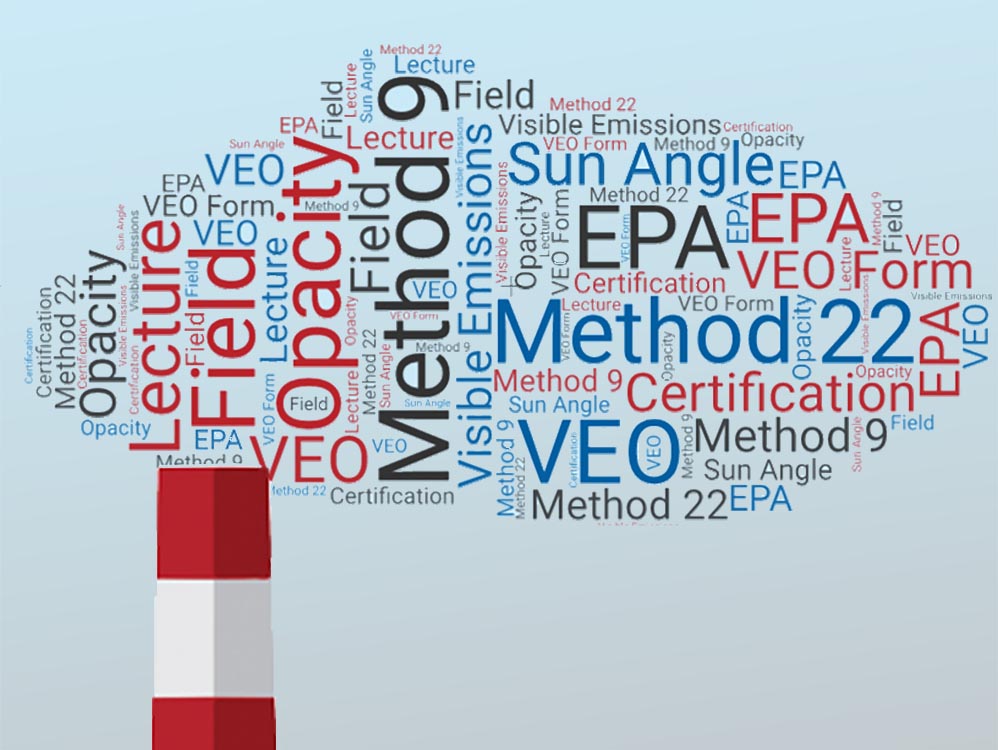Visible Emissions Observation Methods
Excerpt from Online Visible Emissions Course
Return to VEO course summary page »
Observation Methods Introduction
Federal regulations require major sources of air pollutant emissions to obtain operating permits, referred to as Title V operating permits. Title V permits are typically issued at the state level but may be issued at the federal level for tribal lands and other situations. (EPA: https://bit.ly/3axsLQI).
Title V permits provide monitoring, record keeping, and reporting requirements for a facility to comply with air quality standards. Title V requirements are used in creating compliance assurance monitoring (CAM) procedures. The CAM processes must produce reliable, accurate, documented, and traceable results.
Title V permits may specify methods of measurement, including Method 9 and Method 22 (Methods). If Methods are not specified in the permit, the facility can utilize quick checks to remain in compliance.
Method 9 and Method 22 are at the core of local, state, and federal air pollution enforcement. Promulgated by the EPA in 1974 and 1982, the Methods are the most actionable tools for enforcing opacity regulations.
Method 9 defines how to monitor emissions from air pollution sources. Method 22 can also be used to observe emissions but is a qualitative technique that only checks for the presence or absence of an emission and how long it occurred.
Method 22 is most commonly used on unconfined sources or fugitive emissions or sources in which “no emission” is the stated goal.


